Understanding Diamond Value: A Detailed Guide

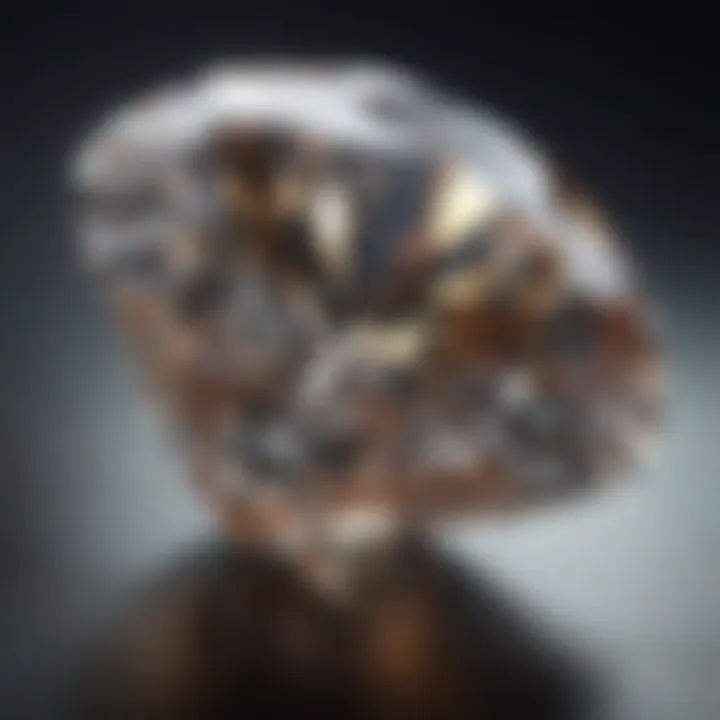
Intro
Diamonds have long captivated humanity with their undeniable beauty and exceptional durability. Beyond their allure, the value of diamonds is a complex tapestry woven from various threads, such as rarity, market dynamics, and cultural significance. This guide seeks to deconstruct the multifaceted factors that determine the pricing of diamonds. By understanding these elements, not only can enthusiasts and collectors make informed choices, but they can also appreciate the profound historical and cultural narratives that shape these precious stones.
Gemstone Overview
Definition of Gemstones
Gemstones, in the simplest terms, are pieces of mineral crystal, or organic material that, when cut and polished, are used in jewelry or the decorative arts. Among them, diamonds hold a unique status owing to their outstanding physical characteristics.
Classification of Gemstones
Gemstones can be broadly classified into two categories: precious and semi-precious. Diamonds fall under the precious category, alongside rubies, sapphires, and emeralds. Here's a brief breakdown of how gemstones are classified:
- Precious Gemstones: Generally rarer and more valuable. They include:
- Semi-Precious Gemstones: More abundant and varied. Some examples are:
- Diamonds
- Rubies
- Sapphires
- Emeralds
- Amethyst
- Topaz
- Opal
- Garnet
Understanding these classifications helps in grasping the intrinsic value of diamonds compared to other gemstones.
Historical Significance
Origins of Gemstone Use
Historically, gemstones have held powerful cultural significance. Ancient civilizations utilized them not just for adornment but as symbols of power, wealth, and spirituality. Diamonds, specifically, have a storied past, with evidence tracing back to ancient India, where they were regarded as talismans for protection.
Cultural Insights: Gemstones in Ancient Civilizations
In the ancient world, various cultures revered gemstones for their perceived magical properties. For example:
- Egyptians believed diamonds were tears of the gods.
- Greeks associated them with divine power and protection.
- Indians regarded them as symbols of love and commitment.
"Gemstones are not just earth’s beauties; they are mirrors reflecting cultures and the societal values of their time."
This profound cultural significance continues to shape the diamond market today, influencing both sentimental and monetary value.
As we proceed, we will further unpack the aspects influencing diamond pricing, the interplay of market demand, and consider investment opportunities in this unique gemstone.
Understanding the roadmap of diamond valuation is not just for those in the trade but for anyone who wishes to delve deeper into the gems that so often light up our lives.
Preamble to Diamond Valuation
Understanding the worth of diamonds is not just about their sparkle; it's about the intricate web of factors that contribute to their valuation. In the world of gemstones, diamonds hold a unique place. Their price can fluctuate based on a multitude of elements, from the prevalent market trends to the individual characteristics of each stone. This section aims to shed light on diamond valuation, illuminating its significance in the world of jewelry and investment.
For anyone considering the purchase of diamonds, knowing how valuation works is essential. With countless options available, a well-informed buyer can navigate through the complexities of pricing with a keen eye. Being aware of the different determinants of pricing can save individuals both time and money, allowing them to find the best diamond for their needs and budget.
When you dive into diamond valuation, it’s vital to comprehend the foundational elements that impact worth. One fundamental aspect to recognize is how seemingly minor details, like inclusions and carat weight, can lead to dramatic shifts in value. This knowledge not only enhances the buying experience but also contributes to a more profound appreciation for the art of diamond-making.
Let’s go further and examine specific aspects more closely, starting with the basics of diamond pricing.
Understanding the Basics of Diamond Pricing
To grasp how diamond pricing works, one must consider the market forces that govern the dissemination of these precious stones. The value of a diamond is influenced by its inherent characteristics, the supply and demand dynamics, and sometimes even the current fashion trends. Understanding these foundational elements is crucial for both buyers and sellers in the diamond market.
Several key components contribute to the overall pricing structure of diamonds, including:
- The Four Cs: Cut, Color, Clarity, and Carat weight. Mastering these attributes can help you make sense of price points.
- Market Trends: The jewelry industry is ever-evolving; what is considered desirable one year may change the next.
- Economic Factors: Broader economic conditions, like inflation and consumer purchasing power, can significantly impact diamond prices.
As you dive deeper into the diamonds world, awareness of these aspects leads to a better grasp on how pricing is affected. It's like peeling an onion, revealing more layers of complexity as you learn.
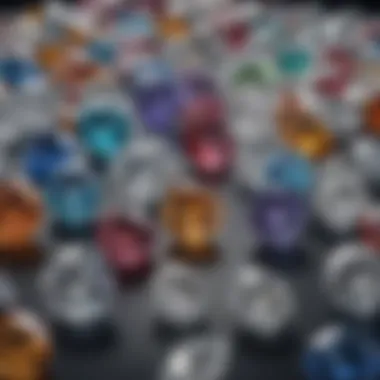
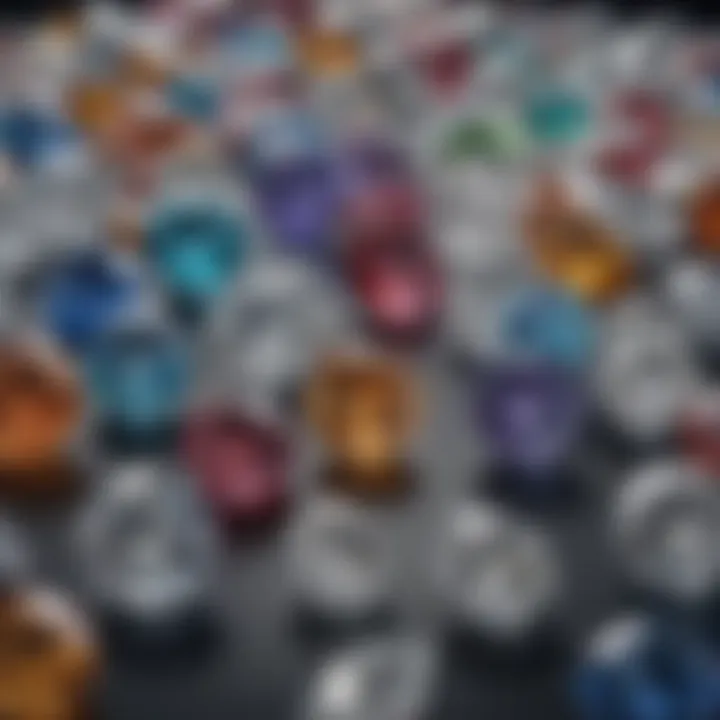
Importance of Carat Weight
Carat weight is one of the most prominent features that buyers pay attention to when evaluating a diamond. It's more than just a number; it holds a great deal of influence over the diamond’s perceived value. Typically, a larger diamond is more expensive, though this is not a strict rule due to the other Cs.
However, it’s crucial to understand that carat weight doesn’t solely dictate value. A diamond weighing one carat may be pricier than one weighing slightly more due to factors like cut quality or clarity. Here’s how carat weight plays a pivotal role:
- Tapering Prices: As a diamond reaches specific carat milestones, prices can increase disproportionately. For instance, a 1.0 carat diamond may cost remarkably more than a 0.9 carat diamond, even if they appear similar.
- Perception vs. Reality: A small increase in carat weight doesn’t always equate to the same increase in size visible to the naked eye. This means savvy buyers often opt for slightly lower weights with high quality to maximize value.
- Selection Availability: Diamonds are often defined by their weight classes. Knowing where demand lies can help buyers strategically choose their diamond based on carat weight preferences.
The Four Cs of Diamonds
The significance of the Four Cs—Cut, Color, Clarity, and Carat Weight—cannot be overstated when it comes to understanding diamond value. These elements serve as the foundation for assessing the quality and the pricing of diamonds across the marketplace. Each C has its distinct characteristics, interrelating and together they form a diamond's overall worth. A nuanced grasp of these factors will empower gemstone enthusiasts, collectors, jewelry designers, and geology aficionados to make informed choices and investments.
Cut: The Craftsmanship Behind the Sparkle
The cut of a diamond significantly influences its visual appeal. It dictates not just how it looks but also how it interacts with light. A well-cut diamond can exhibit extraordinary brilliance, which is that captivating sparkle that draws the eye. Think of it as a finely tuned instrument; each facet needs precision to produce a harmonious light show.
When evaluating cut quality, a grade ranging from Excellent to Poor comes into play. An excellent cut will reflect light beautifully, making the diamond appear larger and more vibrant, while poorer cuts may lead to a dull appearance. More than aesthetics, the cut also affects durability—some shapes might be more susceptible to chipping. Thus, selecting an optimal cut is crucial, not just for aesthetics, but for the longevity of the gem.
Color: From Clear to Fancy Shades
Color represents a critical aspect in diamond valuation, spanning a spectrum from completely colorless to shades that thrill collectors. Most buyers seek diamonds that fall within the D to Z grading scale, where D denotes colorlessness and Z indicates noticeable hues. Of equal note are the fancy colored diamonds, such as pink, blue, and yellow, which can fetch spectacular prices.
It is important to understand how color impacts value. A colorless diamond typically commands a higher price due to its rarity. Yet, certain fancy colors can topple this convention. For example, a vivid pink diamond may exceed the cost of many colorless diamonds because of high demand and limited supply. Therefore, determining the color may not just influence your choice, but your pocketbook as well.
Clarity: Identifying Inclusions and Blemishes
Clarity evaluates the presence of inclusions and blemishes within a diamond. Inclusions are internal flaws like tiny crystals or clouds, while blemishes are external marks on the surface. The GIA grades clarity on a scale ranging from Flawless to Included. A Flawless diamond is exceedingly rare, leading to exorbitant prices, while those labeled as Included may not catch the eye, which can impact their value dramatically.
Understanding clarity allows buyers to assess the gem's nature. A diamond may look stunning on the surface yet possess internal flaws observable under magnification. It’s worth getting a thorough appraisal or certification to ensure you're aware of any drawbacks. In many cases, minor inclusions may not diminish the beauty and sparkle of the diamond visibly, but they play a role in determining value.
Carat Weight: A Double-Edged Sword
Carat weight often reigns supreme in the minds of many buyers—it’s tangible and represents the size of the diamond. However, it is a double-edged sword. While a larger carat weight naturally tends to command higher prices, the rate of increase in value isn’t linear. For instance, a one-carat diamond will typically cost much more than half-a-carat diamond, despite the weight difference being modest.
Moreover, it's vital to consider how carat weight interacts with the other Cs. If a diamond offers a high carat weight but is of poor cut, color, or clarity, it may not yield the return on investment you expect. Therefore, focusing solely on carat weight can lead to tunnel vision. A well-rounded assessment including all Four Cs is the way to go—remember, sometimes less is more when it comes to these sparkling gemstones.
To sum up, the Four Cs work as interdependent factors that all contribute to a diamond's allure and worth. Pay keen attention to each element to make an educated purchase.
Market Influences on Diamond Prices
Understanding the market influences on diamond prices is crucial for anyone contemplating a diamond purchase. It’s not simply about the stone itself; it's about how the larger economic landscape interacts with supply and demand. Several factors can impact the value you pay or receive when buying or selling a diamond. Knowing these factors allows for more informed decisions and greater appreciation of the investment.
Supply and Demand Dynamics
When we talk about diamonds, the first thing that comes to mind is the classic economic principle of supply and demand. Diamonds have a unique characteristic compared to many other commodities; their supply is relatively fixed because it takes significant time and resources to extract them from the earth. This is where things get interesting.
On the supply side, the mining of natural diamonds is declining. Many mines are reaching their end, while new discoveries aren't keeping pace. The diminishing supply can lead to increased prices, especially in the face of an unending allure diamonds hold.
Conversely, demand for diamonds continues to grow, fueled by cultural significance and societal norms surrounding events like engagements and weddings. According to recent studies, millennials are entering the market with an adventurous spirit, seeking diamonds that resonate with their personal values. This shift often leads to increased interest in unique or ethically sourced stones, influencing prices further.
Here are some key points to consider regarding supply and demand dynamics:
- Cultural factors continue to drive demand, particularly in regions with strong wedding traditions.
- Shift in consumer preferences towards lab-grown diamonds can also create fluctuations in natural diamond prices.
- Global economic conditions, such as recessions or booms, can either curtail or stimulate spending on luxury items like diamonds.
"When it comes to buying a diamond, understanding supply and demand is like having a compass in a forest. It points you in the right direction."
Economic Factors Affecting the Gem Industry
The gemstone industry, particularly diamonds, is not immune to the ebbs and flows of the economy. Economic stability or volatility can profoundly affect the price of diamonds in numerous ways.
For instance, during economic downturns, luxury items often take a hit. People might be less inclined to splurge on a diamond ring when they’re unsure about their financial future. On the flip side, during prosperous times, robust spending most often sees a significant uptick in diamond prices due to heightened demand and consumer confidence.
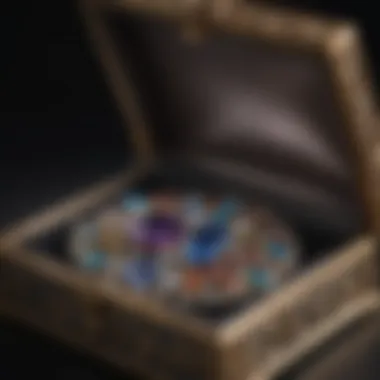
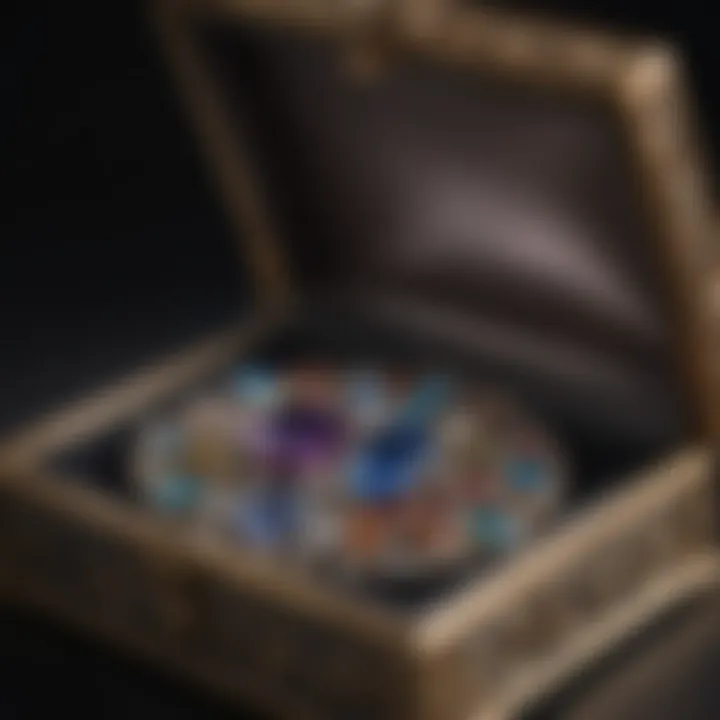
Here are some economic factors worth noting:
- Inflation can affect raw material prices, which in turn may hike up consumer prices for finished diamond jewelry.
- Exchange rates can also play a pivotal role. Fluctuations can affect pricing for imported stones.
- Interest rates: Lower rates tend to increase consumer borrowing and spending, potentially boosting diamond sales.
In understanding how these elements intertwine with diamond valuation, it’s clear that potential buyers or collectors must keep an ear to the ground regarding economic trends. Evaluating the health of the economy can provide insights into when to buy or sell, ensuring that you’re not caught on the wrong side of market influence.
Additional Costs of Buying Diamonds
When considering the purchase of a diamond, the price tag isn't just about the stone itself. Many additional costs come into play, impacting the total expenditure. Understanding these costs is crucial for any potential buyer, as they can significantly influence the overall investment in a diamond. Ignoring these aspects might lead to unwelcome surprises later on, and no one wants that when making a significant purchase.
Certification and Appraisal Fees
Certification of a diamond is one of the first additional expenses you should consider. It offers buyers reassurance regarding the quality of the stone, often backed by esteemed grading organizations like GIA or AGS. While many buyers may feel inclined to skip this step to save a few bucks, investing in certification can save grief down the road. You want to be sure that your diamond is what the seller claims it to be.
Appraisal fees might follow. This cost typically occurs if the diamond needs a professional assessment for insurance purposes or resale value. Consultations vary by jeweler, but budget for several hundred dollars to get an accurate and trustable appraisal. Often, the peace of mind and potential protection against future losses can far outweigh this relatively small expense.
Setting and Mounting Costs
Once you’ve settled on a diamond, you will need to discuss how to set it. The type of setting you choose can greatly affect the final price of the ring. Simple settings, like a solitaire, generally cost less than more elaborate designs, which can include intricate details or multiple stones. Gold, platinum, or other materials can influence the price, too. Generally speaking, a diamond ring could end up costing anywhere from a few hundred to several thousand dollars just for the setting.
So, when pondering your purchase, it's advisable to think about your aesthetic desires and budget. Don't shy away from having a discussion with your jeweler about the options available – this is their expertise, after all.
Insurance and Maintenance Considerations
Once you claim ownership of a diamond, protecting your investment is a smart move. But don’t overlook the costs associated with insurance. Depending on the value of the diamond, annual insurance premiums can set you back anywhere from 1% to 3% of its appraised worth. It’s an important step that many people overlook, thinking it’s unnecessary until something goes wrong.
Additionally, maintenance costs might rear their heads. Simple regular cleanings and check-ups ensure your diamond retains its luster. Moreover, should any repairs be needed, the costs can add up. This ongoing expense needs to be factored in when budgeting,
Investment Potential of Diamonds
When it comes to diamonds, the conversation often pivots from their beauty to their viability as an investment. Investors are not only enamored by the sparkle but are also keenly aware of the potential to gain value over time. The investment potential of diamonds presents a field rich with possibilities, yet it comes with its unique set of challenges and considerations. Understanding this facet of diamonds is essential for enthusiasts, collectors, and investors alike, who seek to navigate the complex gem market intelligently.
Long-Term Value Retention
Investing in diamonds isn't just about purchasing a piece of jewelry; it’s about acquiring a tangible asset that can appreciate in value over the years. The notion of long-term value retention is crucial in this discussion.
Diamonds have a historical precedent for retaining and even increasing in value across various market conditions. Unlike other investments subject to wild fluctuations, such as stocks or cryptocurrencies, diamonds tend to have a steadier trajectory, provided that the right criteria are met. Key points to consider include:
- Quality Over Quantity: Higher carat weight coupled with exceptional clarity, cut, and color – the Four Cs – usually fetch greater returns. An investment in a high-quality diamond is likely to retain value better than a mass-produced piece.
- Market Stability: The diamond market, while influenced by trends, shows consistent demand stemming from relentless human affinity for this gemstone. This stability provides a degree of assurance to investors.
- Limited Supply: The finite nature of diamonds, particularly larger, well-cut stones, affects their scarcity, often driving prices upward over time. Supply constraints tied to mining and natural disasters can further enhance value.
"Investing in diamonds combines the allure of shape and shine with the strategic acumen of portfolio diversification."
Resale Market Insights
A vital aspect of investing in diamonds is the resale market, which serves as a critical barometer of their investment potential. Understanding how to navigate this arena can spell the difference between a lucrative sale or a lackluster return.
Engaging with the resale market requires a grasp of factors that determine how well a diamond will perform when put back on the market:
- Tracking Trends: Keeping an ear to the ground on current fashion trends and celebrity preferences can guide potential resale opportunities. Diamonds are still viewed as status symbols, and trends shift with societal dynamics.
- Selling Venues: Different channels can yield different results; auctions might fetch higher prices for rare pieces, while established retailers may offer quicker, but potentially lower returns. Knowing where to sell can make a substantial difference.
- Documentation Matters: Having certificates from reputable gemological laboratories increases a diamond’s resale value significantly. Provenance and authentication act as crucial selling points.
Alternative Purchasing Options
When it comes to acquiring diamonds, potential buyers face a multitude of decision points. These choices can significantly impact the overall value and satisfaction of the purchase. This section delves into alternative purchasing options available in today’s market, focusing on lab-grown versus natural diamonds, and the contrast between online and traditional retailers. Both aspects are crucial for discerning buyers, as they navigate through an industry filled with both possibilities and pitfalls.
Lab-Grown vs. Natural Diamonds
In the realm of diamonds, distinguishing between lab-grown and natural options is like separating the wheat from the chaff. Lab-grown diamonds, produced in controlled environments, possess identical physical and chemical properties as their natural counterparts. The primary difference lies in their origin. While natural diamonds have formed over billions of years beneath the Earth’s crust, lab-grown diamonds are created within weeks.
Benefits of Lab-Grown Diamonds
- Cost-Effective: Generally priced 20-40% lower than natural diamonds, lab-grown stones present a budget-friendly option.
- Ethically Sourced: Many buyers prefer lab-grown diamonds as they eliminate concerns associated with conflict diamonds.
- Environmental Impact: These alternatives often have a smaller carbon footprint, as their production is more confined and regulated.
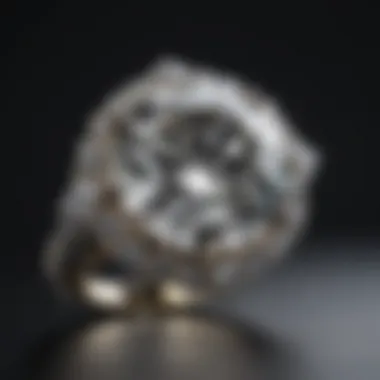
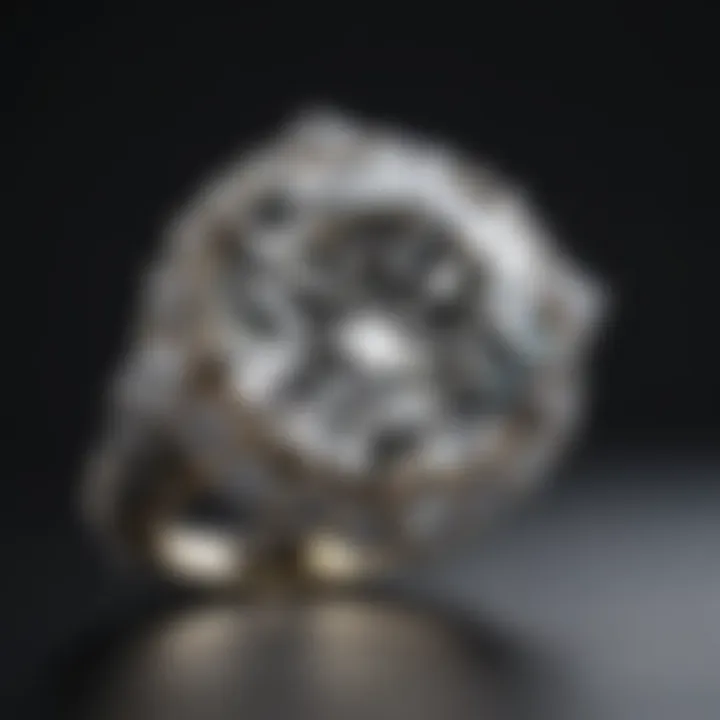
Considerations
Despite their advantages, lab-grown diamonds might not carry the same prestige or investment potential as natural diamonds. Some collectors and investors still view natural stones as superior, given their uniqueness and historical significance.
Online vs. Traditional Retailers
Navigating the realm of diamond purchasing is now more flexible than ever due to the options of online and traditional retailers. This choice has broader implications for buyers concerning price, selection, and experience.
Advantages of Online Retailers
- Wider Selection: Online platforms typically offer a more extensive inventory, as they aren’t limited by physical space.
- Convenience: Shopping from the comfort of home can simplify the process, especially for customers with busy schedules.
- Comparative Pricing: It’s easier to compare prices across multiple sites, helping buyers to secure the best deals.
Traditional Retail Benefits
Conversely, visiting a brick-and-mortar store can offer personal service often lacking in online transactions. Customers can examine diamonds firsthand and receive tailored advice from experienced jewelers.
"Buying a diamond online can be a savvy move for many, yet the value of seeing it in person can’t be overstated. It’s about finding the right balance."
Final Thoughts
Choosing where and what type of diamond to buy hinges on personal priorities and comfort levels. Whether it’s the allure of natural stones or the practical benefits of lab-grown diamonds, along with the convenience of online shopping versus the tactile experience of a physical store, each aspect warrants careful consideration. The decision you make should resonate with your values, style, and future aspirations.
Cultural and Symbolic Significance of Diamonds
Diamonds are not just shiny stones; they carry immense cultural weight and symbolize various facets of human experience. In this article, we will delve into why diamonds hold such significance in different contexts, shedding light on their symbolic meanings and how they have woven themselves into the fabric of human traditions and milestones.
Diamonds in History and Mythology
Throughout the ages, diamonds have sparked the imagination of many. Ancient civilizations saw these stones as more than mere gemstones. For instance, Hindus believed that diamonds were formed from the lightning strikes, while others thought they were the tears of the gods. This perceived divine origin enhanced their allure. There are stories where diamonds were feared and prized; for example, the legendary Hope Diamond is said to bring misfortune to its owners, yet its beauty remains unrivaled.
Moreover, the Greeks associated diamonds with the tears of the gods, encapsulating their ethereal beauty. Their connection to strength and resilience leads one to consider that they are not just symbols of wealth but also of durability. Such beliefs establish a profound link between diamonds and the human experience, shaping their appeal across cultures.
- fascinating tales of diamonds in ancient texts and fables still echo today.
- Many cultures believed that wearing a diamond would endow the owner with invincibility or fortitude.
Additionally, diamonds have made appearances in ancient royal regalia. Kings and queens adorned themselves with these gemstones, marking their status and power. The Persian crown jewels, for example, include some of the largest diamonds known, reflecting opulence and authority. Such historical significance contributes to the modern notion that diamonds symbolize not just love, but also power and authority.
"Diamonds are a girl’s best friend," is more than just a phrase; it encapsulates the evolving relationship between women and gemstones, illustrating how deeply ingrained they are in our collective consciousness.
Modern Engagement and Wedding Traditions
In contemporary society, diamonds are inextricably linked to love and commitment. The tradition of giving a diamond engagement ring can be traced back to the 15th century, but it gained momentum in the 20th century mainly due to clever marketing campaigns. This shift transformed the diamond into a standard symbol of love, where its brilliance is equated to the depth of one's feelings.
When couples take the plunge and decide to wed, the diamond ring often takes center stage. This isn’t just a piece of jewelry; it embodies promises and aspirations, manifesting an emotional connection between partners. Different cultures also put their unique spin on diamond traditions. For example:
- In many Western cultures, a solitary diamond signifies undying love.
- In some Asian countries, colored diamonds are rising in popularity, showcasing individuality.
The push towards lab-grown diamonds has also begun to reshape these traditions. While some view lab-grown options as less authentic, others appreciate their ethical and environmental advantages. As society becomes more conscious of these issues, the meaning of diamonds in engagements may adapt again, but their status as symbols of love remains steadfast.
In summary, diamonds resonate deeply within cultural frameworks, evolving from historical artifacts to symbols of commitment and passion. As we continue to explore the diamond's narrative, it's essential to recognize how these gems can shift meanings over time and across cultures.
Epilogue
As we culminate our exploration of diamond valuation, it becomes apparent that understanding this intricate topic is vital for anyone interested in gemstones, whether you are a collector, designer, or simply an enthusiast. The significance of diamonds goes well beyond their mere visual appeal; it encapsulates a rich tapestry of market mechanics, cultural symbolism, and opportunities for investment.
Summary of Key Takeaways
To summarize the principal points discussed in this article:
- The Four Cs: Cut, color, clarity, and carat weight are pivotal in determining the worth of a diamond. Each "C" plays its unique part, and together they form the cornerstone of diamond valuation.
- Market Dynamics: The supply and demand for diamonds, coupled with economic fluctuations, critically shape market prices. Understanding these factors can aid buyers significantly in making educated choices.
- Additional Costs: Beyond the sticker price, expenses like certification, setting, and insurance should be factored into any diamond purchase. It's crucial to regard these costs firmly as they contribute to overall value.
- Investment Perspective: While diamonds can retain long-term value, their resale potential may not always meet expectations. Researching the market and being aware of current trends can make a considerable difference in investment success.
- Cultural Relevance: Finally, diamonds hold profound meanings across various societies. Their role in engagement and wedding customs speaks volumes about their enduring significance.
Future Trends in Diamond Valuation
The landscape of diamond valuation is shifting, inviting new trends that could redefine how we perceive these precious gems. Here are a few noteworthy developments to watch:
- Lab-Grown Diamonds: These alternatives are gaining acceptance in the market, often presenting a more affordable option without sacrificing quality. As consumer awareness increases, lab-grown diamonds may reshape the traditional market.
- Sustainable Practices: With rising consciousness around ethical sourcing, diamonds that are mined with eco-friendly methods are likely to become more desirable. Sustainability is becoming a crucial consideration for buyers.
- Blockchain Technology: This could revolutionize the way diamonds are tracked and valued, ensuring authenticity and improving transparency in the market. Its integration could enhance buyer confidence and reshape the buying experience.
- Changing Consumer Preferences: The tastes of buyers are evolving, with a growing desire for customization and unique pieces driving demand. This shift may impact valuation as bespoke designs take center stage.
In essence, the real worth of diamonds is a complex fusion of their physical properties and the narratives they tell within society. By taking into account these elements and being aware of trends on the horizon, you can navigate the diamond world more effectively and make informed decisions about purchasing, investing, or appreciating these remarkable gems.



